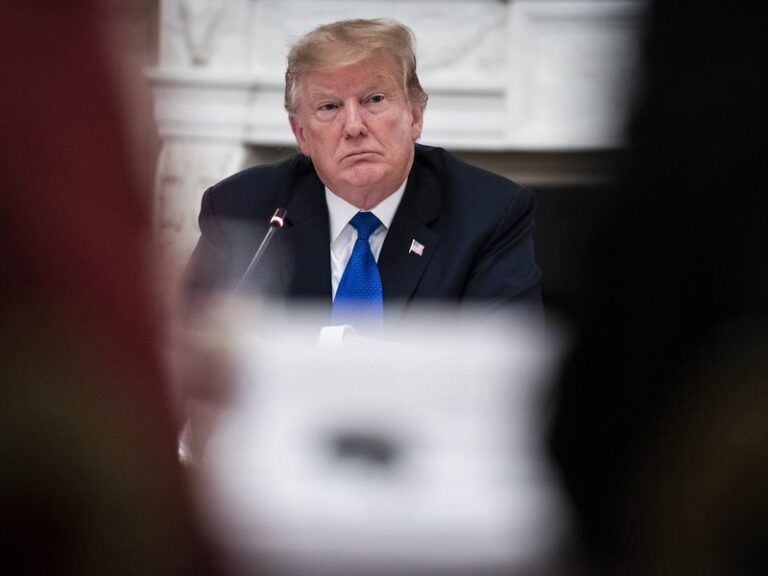Trade War Escalates with Further Trump Tariffs
Market Overview:
In breaking news- President Trump has delivered remarks to impose 10% tariffs on 200 Billion worth of Chinese imported products, these duties will rise to 25% at the end of the year. Trump said the rise to 25% would come into play on the 19th of January 2019 if China retaliates. He would also instigate “phase three” which would be to pursue tariffs on approx 267 Billion of additional products. Markets have turned risk averse on the news with the New Zealand Dollar and Australian Dollar both sharply trading lower.
Investors who started the week long US Dollar have needed to reconsider their risk exposure. Over the week the big dollar appreciated then lost momentum when US inflation data and producer prices both fall short of expectations. Retail Sales also came in poor surprising markets with a reading of 0.1 versus the 0.5% expected. Data shows this was the worse reading since March this year citing lower household spending was the culprit. Equity markets have continued to surge higher over the week but retraced off highs midweek when risk sentiment started to waiver. The S & P is trading at 2904 just shy of its all time high 2908, a scary level when we look back at the speed of the moves to where it trades now. Crude oil backed off lower from its weekly high of 71.25 to trade around the 68.00 area after experiencing massive interest stemming from hurricane buying as Hurricane Florence barrelled down on Carolina. President Trump’s economic trade agenda is due to ramp up this week after implementation of tariffs totalling 200 Billion on Chinese products after the President gave word to his officials to continue forward with his China tariff plan. This week things are due to escalate further with US and China coming up with new ways of retaliating. We have seen threats from both sides recently with markets hoping something may be sorted this week after Steve Mnuchin and a Chinese top official have arranged to meet in Washington. If President Trump announces fresh tariff plans early this week this could derail the meeting sending negotiations back to first base. The New Zealand Dollar closed the week in slightly positive territory across the board but looks to be under a fair amount of pressure. Fridays Manufacturing data showed a sluggish sector for the third consecutive month. Trade concerns could weigh on the kiwi over the week along with other risk currencies such as the Australian Dollar, both seem stuck in long term bearish cycles with the kiwi trading just off its low of 0.6550 against the US Dollar at January 2016 levels. We have another quiet week of economic news with quarterly GDP to print.
Australia
The Australian Dollar rose against most of its peers last week in a resilient show of strength it was back above 0.7200 against the US Dollar at one stage. Key employment data released showing a stable unemployment rate of 5.3% with the change in the number of new employed people jumping to 44,000 from 16,500 markets were expecting. The Aussie Dollar started the year at 0.7900 levels and over the months has fallen to historic lows where it is today struggling to stay above 0.7000 against the US Dollar. The pair briefly dropped in to the 0.70’s last week but wasn’t quite ready to pass below the physiological level of 0.7000. To put this into perspective we have seen 9 positive weeks of the 34 on offer in 2018. To blame – a softening housing market and geopolitical uncertainty offshore with Trump and China potentially affecting Australian Trade into China and also uncertainty associated with the Australian Federal Election due by May 2019. We can expect more of the same – short bursts of bullishness followed by retracements lower creating fresh lows. Australian data will be light this week with tier one releases. The RBA minutes and consumer confidence will be the key focus though the minutes will more than likely not highlight anything new shifting prices far from current levels.
New Zealand
The New Zealand Dollar outperformed its rival currencies during the late part of last week with only Aussie a tad more supported. The kiwi opened lower Monday after currency markets turned to risk averse on reports President Trump has instructed his people to proceed with tariffs of 200 Billion worth of tariffs on Chinese products. The risks this week of an all out trade war are heightened over previous weeks with Trump insisting Americans get a fair deal and China not prepared to back down either. A Chinese official was quoted as saying – the country would not negotiate “with a gun pointed to its head”. Officials in Washington are due to meet later in the week to work towards a resolution. Unfortunately if things don’t go to plan based on the “Trump” factor we could see further risk averse sentiment affect the NZD to the downside. Another quiet week of local data sees Current Account Wednesday and quarterly GDP, expected to print slightly up on last month’s 0.5%.
United States
The US economy has a lot on the line this week with Trump and his officials continuing trade talks with China. Very little economic data will release over the week in the US with only Building Approvals and Crude Oil inventories to focus on. This will leave plenty of scope for trade related headlines to drive markets and currencies at will. Trump and his administration want to move forward with its plan on an additional US 200 Billion of Chinese products. New talks are due to resume on the 20th September (this Thursday) with Chinese officials and Treasury Secretary Steven Mnuchin. China have a few days to reject the meeting if the 200 Billion is imposed and sources are suggesting they may retaliate by imposing limits on the sale of parts and supplies needed by US businesses. The direct result will affect the US distribution of products and commodities. Wow – things could get ugly quick. American equity and commodity markets are all trading flat with the US Dollar index turning negative on the day down to 94.90 this should weaken as the week rolls on.
Europe
Draghi seemed more upbeat during his announcement of the ECB Cash Rate decision on Thursday, leaving the benchmark interest rate unchanged and announcing plans to end its bond buying program at the end of this year, this will bring the entire bond buying QE program which started in 2015 to a close. Draghi said he would keep rates at record lows until at least until the end of next summer. The Central bank also confirmed it would halve the bond purchases to 15 Billion Euro per month starting from October. The Euro rallied to back above 1.1700 before falling victim to risk sentiment retracing the move higher to close at 1.1630 versus the US Dollar. Draghi speaks again this Tuesday in Paris with manufacturing data to print the two main events on the docket this week for the region.
United Kingdom
The British Pound was the standout performer last week with a slew of economic related releases pushing the currency 150 points higher off the open of 1.2920. Brexit related news keeps occupying British newspapers with Theresa May receiving leadership threats from Boris Johnson who said “if Brexit negotiations continue on this path they will end, I am afraid, in a spectacular political car crash”. The Bank of England (BoE) voted unanimously for no change to their official cash rate leaving it at 0.75%. The BoE highlighted concerns with Brexit and said there had been no further domestic developments since the 2nd August hike to be considered. The Average earnings indicator showed an unexpected pickup with the strongest rate of growth over the past three years at 2.6%. This makes interesting reading when we look at the number of UK vacancies rising to over 800,000 in the three months to August – the highest level since records began. Yearly CPI figures and monthly UK Retail sales are the main events on the economic docket this week.
Japan
Japanese Holiday observed Monday with “Respect for the aged day” – the over 70’s Japanese population accounts for 20% of the total population. The US Dollar made up 1 cent in gains over the Japanese Yen last week but US Dollar rallies appear to be well capped at 114.50. For now tension has eased in the markets but we fear this is the quiet before the storm with a big week in store for trade negotiations. For now the Japanese Yen looks capped to the upside with a potential unwinding of equities and risk products expected again perhaps later this week cause some further carnage. Japanese punters will be keeping a close eye on the Bank of Japan BoJ cash rate decision this week, however don’t expect any excitement with the Bank of Japan likely to continue its loose monetary policy with inflation remaining at some distance from the expected target.
Canada
The Loonie has advanced over 1% against the US Dollar last week on the back of risk sentiment and a Crude oil price spike. Crude oil rallied to over 70.00 per barrel, the largest move in over three weeks sending the CAD back through 1.3000 versus the greenback. The rally has come about after speculation hurricane Florence would create an oil shortage which in turn pushed the price higher. This week’s inflation and Retail Sales will be crucial for the Bank of Canada’s thinking on raising rates in October 25th. With the US raising their cash rates again in 2018 this is putting increased pressure on the Canadians. NAFTA headlines could be announced with negotiations continuing this week, with the aim of adding Canada to the US/Mexico agreement.
Major Announcements last week:
- Australian Employment improves a whopping 44,000 new people employed.
- Bank of England keep rate at 0.75%
- European Central Bank keep refinacing rate at record lows.
- US monthly CPI numbers print down on expectation putting pressure on the Dollar.
- Markets turn risk averse as trade war threats rise.



